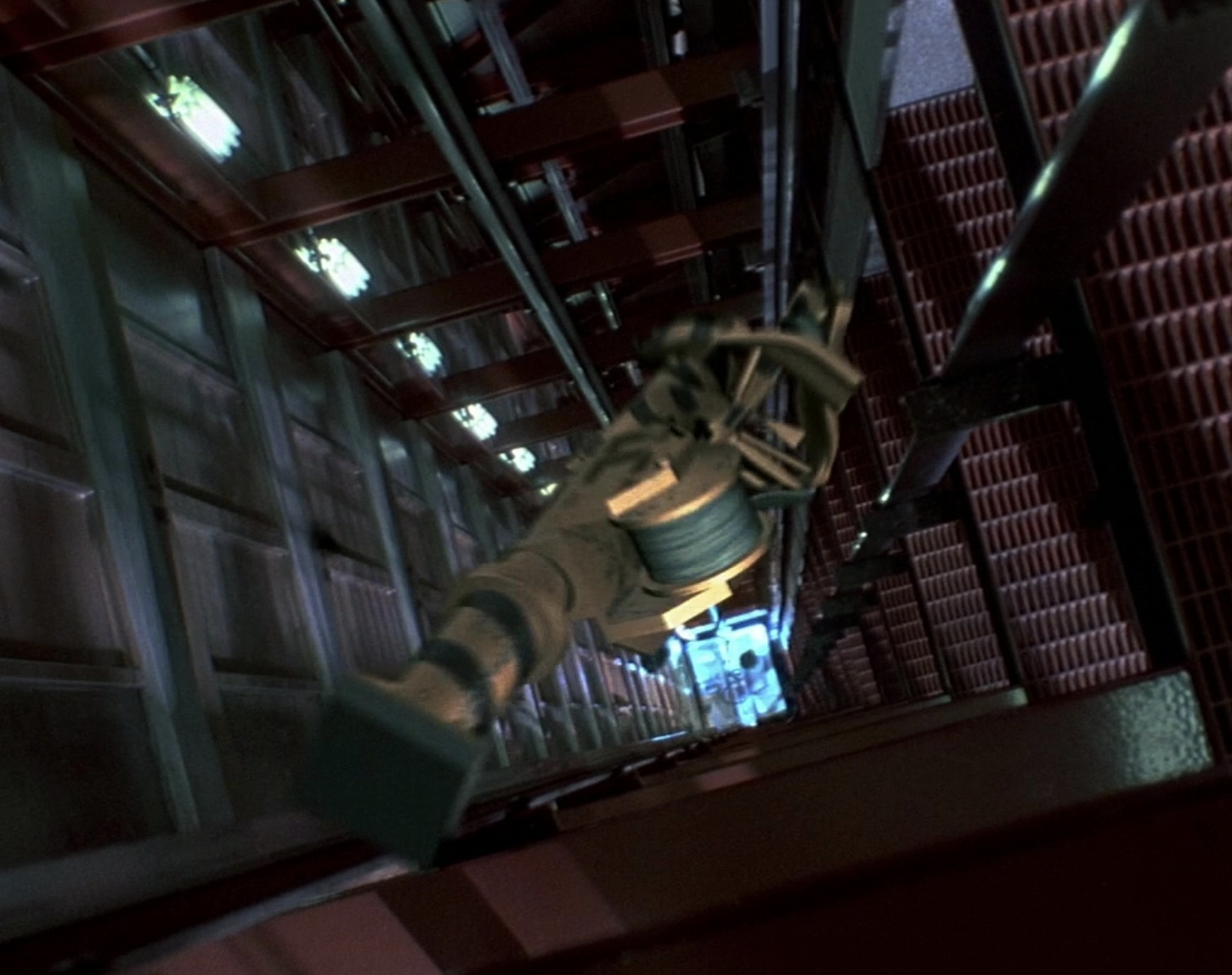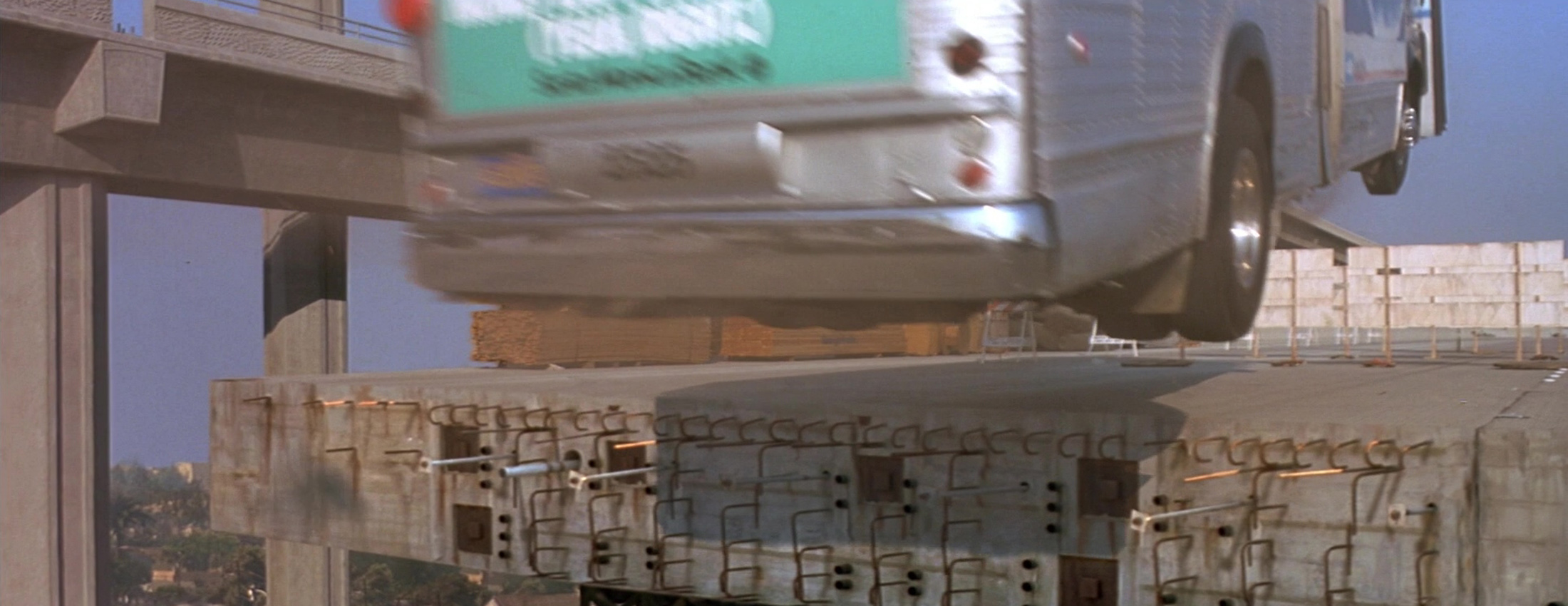The Old School Meets the New School
Speed would not be a visual effects-heavy film in the sense that it would not be packed with post-production CGI. However, it would ultimately be a fascinating example of hybrid practices, combining old-school practical wizardry and cutting-edge post-production flourishes that would make it an unusual specimen at a watershed moment for Hollywood action filmmaking.
“It was a transitional period of time,” says visual effects DP Dave Drzewiecki. “It was a hybrid movie and I would say that to people, and they would look at me like they didn’t understand what I was talking about, but it’s true. It was really a period of time when it was turning and you could feel it. You could smell it in the air. The way it used to be done, the Linwood Dunn wire, tape and rubber-band style was going away, and this new thing, this digital imaging, was really coming into its own.”
Jan de Bont and company would engage the expertise of legends like Grant McCune and Jack Sessums to produce miniature elements for the bookending elevator and subway sequences, while in the post-production suite, folks like visual effects supervisor Boyd Shermis would wrangle newfangled techniques to really make Speed‘s high-energy sequences really pop. A particularly new tool, pre-visualization, would even be employed for the purposes of the film’s opening credits sequence.
“To my knowledge, it was one of the first times that pre-viz had been used in a feature film,” Shermis says. “One of the reasons we did it, really, was just to time it all out so that all these names would be on screen for [the] exact amount of time. That was fairly new and sort of an unheard-of thing to do at the time. But the technology was available to us, and so, we decided to do it, just to figure out how we were going to do it.”
That sequence would make considerable use of Grant McCune’s elevator miniature, overseen by chief model maker Clark Schaffer. It would be achieved via hours-long takes in a process that, today, would simply be knocked out with a computer.
“As [the camera] moved, we had to remove the next beam to allow the camera to pass, but then replace it as soon as the lens got past it,” Schaffer says. “So, we were playing hopscotch with our set. The motion control was going very, very slow, and we were lifting one and replacing it as the lens passed in the right linear space. I remember babysitting that model and it was quite a project on a few days.”

Visual effects would also be employed to execute the most expensive shot of the film, making the oncoming danger of the gap in the freeway all the more potent.
“It was a very long shot, but even more than just the duration, it’s a panning, tilting, zooming camera mounted to a moving helicopter,” Shermis says. “And this is back in the days when you didn’t just have match-moving and tracking and all those things that we, today, take for granted, or LiDAR, you know, that you can check your tracks against. This was something done sort of freehand.”
Digital matte paintings, CGI renderings within miniature environments – you name it, we cover it. And that’s all barely scraping the surface. We also engage some of today’s esteemed VFX artists like Todd Vaziri (Avatar, Star Wars: The Force Awakens) and Jake Braver (Birdman, John Wick), among others, to take stock of Speed‘s legacy in their field.
All of that and more in this week’s episode of 50 MPH!
